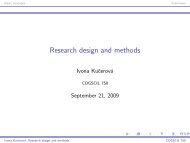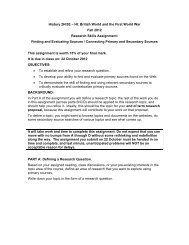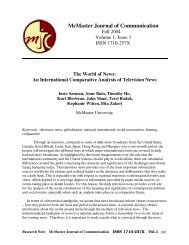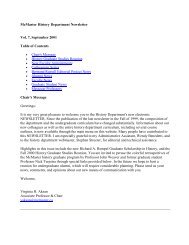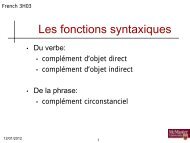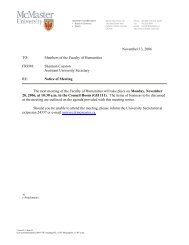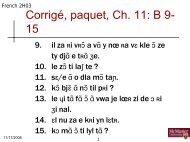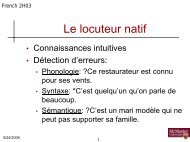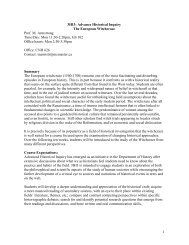The Syntax of Givenness Ivona Kucerová
The Syntax of Givenness Ivona Kucerová
The Syntax of Givenness Ivona Kucerová
Create successful ePaper yourself
Turn your PDF publications into a flip-book with our unique Google optimized e-Paper software.
(51) Reference set for Maximize Presupposition evaluation<br />
For the purposes <strong>of</strong> Maximize Presupposition, the reference set, toward which<br />
Maximize presupposition is evaluated, consists <strong>of</strong> all derivations<br />
a. that are based on the same numeration and free insertion <strong>of</strong> a G-operator, and<br />
b. that make the same assertion.<br />
I assume that the G-operator is not part <strong>of</strong> the numeration but it is a syncategoramatic operator<br />
which the semantic module can introduce without violating inclusiveness (for example,<br />
Chomsky (2000)). A crucial part <strong>of</strong> the proposal is that the semantic module has the capacity<br />
to license an otherwise illicit structure but only if there is no other way to achieve the<br />
desired interpretation (see also Fox (2000)). In our case, the illicit operation under discussion<br />
is G-movement. We have derived the fact that G-movement is allowed only if it affects<br />
the semantic interpretation. Now we can define the relevant condition more precisely.<br />
(52) Economy condition on G-movement:<br />
<strong>The</strong> only structure that is allowed is the structure that has the smallest number <strong>of</strong><br />
G-movements and leads to the relevant interpretation (i.e., assertion and presupposition).<br />
<strong>The</strong> new condition on G-movement has several welcome consequences. First <strong>of</strong> all, we<br />
no longer need to distinguish between movement <strong>of</strong> a head for givenness and movement<br />
<strong>of</strong> a head which facilitates G-movement. Under the current definition, the only thing that<br />
matters is whether the resulting structure allows insertion <strong>of</strong> a G-operator in a position that<br />
would not be available otherwise. Whether the movement affects a new or a given element<br />
is irrelevant. To see this, consider the following example and its derivation.<br />
(53) a. What about Petr?<br />
b. Petra || vítá Marie.<br />
Petr.Acc welcomes Marie.Nom<br />
‘Marie welcomes Petr.’<br />
Assuming that a T projection does not need to be inserted in the present tense, 14 the derivation<br />
proceeds as in (54). First, the given object moves over the verb, as in (54-a). <strong>The</strong>n<br />
the verb moves to v. Now the object needs to move again, (54-b). Notice that it is not<br />
possible to mark the object by a G-operator within VP: since VP is not <strong>of</strong> an atomic type,<br />
the operator would necessarily affect structurally higher material (the verb and the subject;<br />
the elements in the scope <strong>of</strong> a G-operator are marked by a box). After the object moves to<br />
vP, the subject is merged, (54-c). In principle the derivation might be able to stop here. <strong>The</strong><br />
problem is that, in this configuration, there is no position into which a G-operator could be<br />
inserted without marking the subject as given as well (which would lead to Presupposition<br />
failure). Thus, there is no choice other than to continue the derivation: the verb moves to<br />
T, the object moves to Spec,TP and a G-operator can finally be inserted in a position which<br />
satisfies Maximize presupposition without leading to Presupposition failure, (54-d).<br />
14 I assume a grammar in which a functional projection is projected only if it is associated with overt<br />
material or if it is selected by a higher head. Cf. for example Wurmbrand (2006, To appear).<br />
102





